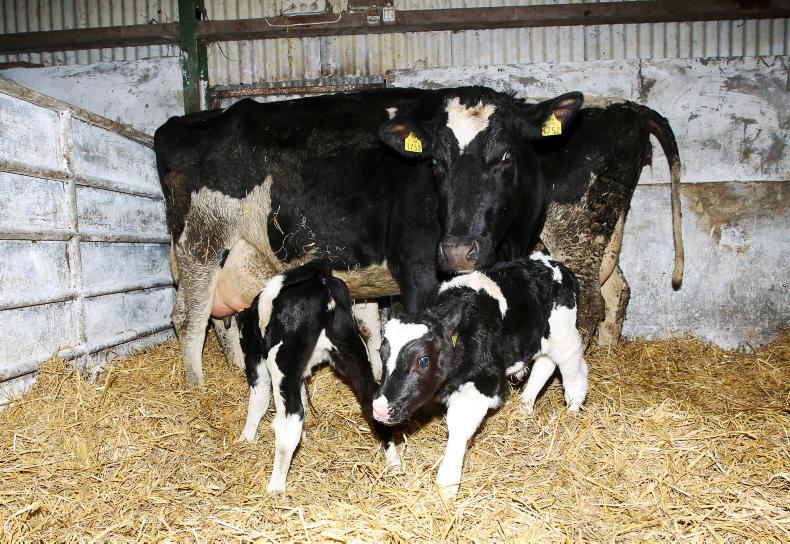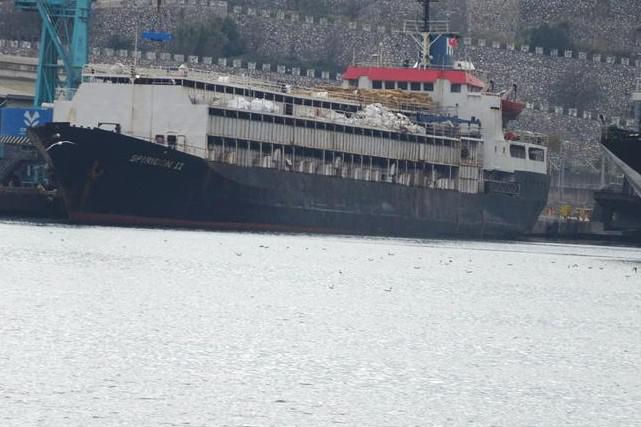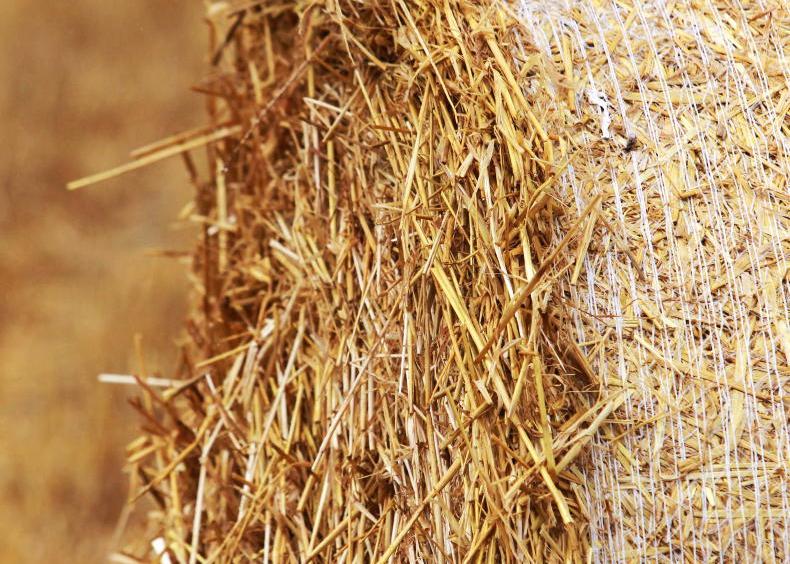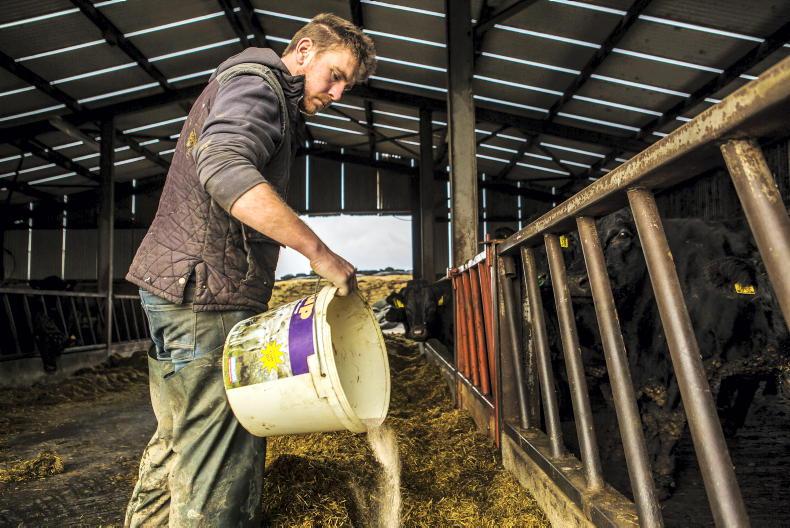Probably the most critical place for hygiene on a farm is the calving area. The reason for this is that animals using this area are exposed and vulnerable. This is a dangerous combination when there is bacteria around.
Cows and calves are exposed to bacterial infections when in the calving area. The cow’s uterus is open before, during and after calving. This is the only time that the uterus is open – every other time it’s closed, save for when the artificial insemination gun navigates its way through. If the cow is calving in dirty surroundings, then there is a possibility that faeces and bacteria can make its way into the womb, causing infection.
Vulnerability
Another area of exposure in a cow is her teats. At calving, the teat canal is often open and cows can be dripping milk as oxytocin is released. If milk can come down the canal, then bacteria can go up and potentially cause mastitis–the worst form being e-coli mastitis– which could potentially kill the cow.
If bacteria enters the area it can cause an infection
The newborn calf is extremely vulnerable. The main area of vulnerability is the naval which, prior to leaving the womb, was the connection point for the umbilical cord. With the cord broken, the naval is exposed and becomes a huge risk. If bacteria enters the area it can cause an infection, such as joint ill and swelling around the naval. For this reason, farmers dip the naval in iodine or chlorhexidine antiseptic as soon as possible after calving.
A cow’s immune system is often suppressed at calving time
The next issue is vulnerability. A cow’s immune system is often suppressed at calving time, so they are more likely to pick up an infection. It’s the same with a calf. Prior to receiving colostrum, it has no natural immunity to infections.
Another issue is the amount of bacteria present in calving areas. It has been suggested that there is much more bacteria present in a straw-bedded calving shed than any other straw-bedded shed.
The regular supply of calving fluids and cleanings provide a rich source of feed for bacteria. All of these reasons are why hygiene is so important in the calving shed.
The protocol
The procedure recommended by vets for cleaning out calf and calving sheds is to remove all bedding material. The next step is to wash the shed with a power washer and let it dry. Disinfect the shed using disinfectant mixed at the correct rate and applied using a knapsack sprayer. The final step is to let it dry again before putting in new bedding.
However, it’s not possible to let the shed dry twice during the season, particularly on busy dairy and beef farms. But perhaps, where multiple calving pens are being used, a pen or pens can be washed in this way with all pens washed correctly in rotation.
For farmers with group maternity facilities, allowing the shed to dry before and after disinfecting will likely not be possible, unless it is completed when calving is quiet. However, the longer the pen is left empty and dry the better, as most bugs require moisture to survive.
It’s important to remember that not all disinfectants will kill bugs like coccidiosis and cryptosporidium
There is a difference between disinfectants and antiseptics. Disinfectants are powerful chemicals used to kill bugs in an environment such as shed walls and floors, whereas antiseptics are less severe and are used for cleaning and sterilising equipment like ropes and calving jacks, and for disinfecting navals.
It’s important to remember that not all disinfectants will kill bugs like coccidiosis and cryptosporidium. Many of the well-known products used on farms are not effective against them.
Special disinfectant is required if cryptosporidium or coccidiosis are problems.
Apart from liquid disinfectants, powder-based products like hydrated lime are also effective at killing most bugs. Hydrated lime increases the pH to a level that the bugs cannot survive in.
Calving areas are a hotbed for infection. Cows and calves are very vulnerable and are more exposed to infections at calving time. Calving sheds should be cleaned out regularly to prevent the build up of infection.As close as is practical, follow the correct procedure when cleaning out and disinfecting calving sheds. Read more
Grass+: storm stalls strong start to the grazing season
No stop to grazing in the southeast
Probably the most critical place for hygiene on a farm is the calving area. The reason for this is that animals using this area are exposed and vulnerable. This is a dangerous combination when there is bacteria around.
Cows and calves are exposed to bacterial infections when in the calving area. The cow’s uterus is open before, during and after calving. This is the only time that the uterus is open – every other time it’s closed, save for when the artificial insemination gun navigates its way through. If the cow is calving in dirty surroundings, then there is a possibility that faeces and bacteria can make its way into the womb, causing infection.
Vulnerability
Another area of exposure in a cow is her teats. At calving, the teat canal is often open and cows can be dripping milk as oxytocin is released. If milk can come down the canal, then bacteria can go up and potentially cause mastitis–the worst form being e-coli mastitis– which could potentially kill the cow.
If bacteria enters the area it can cause an infection
The newborn calf is extremely vulnerable. The main area of vulnerability is the naval which, prior to leaving the womb, was the connection point for the umbilical cord. With the cord broken, the naval is exposed and becomes a huge risk. If bacteria enters the area it can cause an infection, such as joint ill and swelling around the naval. For this reason, farmers dip the naval in iodine or chlorhexidine antiseptic as soon as possible after calving.
A cow’s immune system is often suppressed at calving time
The next issue is vulnerability. A cow’s immune system is often suppressed at calving time, so they are more likely to pick up an infection. It’s the same with a calf. Prior to receiving colostrum, it has no natural immunity to infections.
Another issue is the amount of bacteria present in calving areas. It has been suggested that there is much more bacteria present in a straw-bedded calving shed than any other straw-bedded shed.
The regular supply of calving fluids and cleanings provide a rich source of feed for bacteria. All of these reasons are why hygiene is so important in the calving shed.
The protocol
The procedure recommended by vets for cleaning out calf and calving sheds is to remove all bedding material. The next step is to wash the shed with a power washer and let it dry. Disinfect the shed using disinfectant mixed at the correct rate and applied using a knapsack sprayer. The final step is to let it dry again before putting in new bedding.
However, it’s not possible to let the shed dry twice during the season, particularly on busy dairy and beef farms. But perhaps, where multiple calving pens are being used, a pen or pens can be washed in this way with all pens washed correctly in rotation.
For farmers with group maternity facilities, allowing the shed to dry before and after disinfecting will likely not be possible, unless it is completed when calving is quiet. However, the longer the pen is left empty and dry the better, as most bugs require moisture to survive.
It’s important to remember that not all disinfectants will kill bugs like coccidiosis and cryptosporidium
There is a difference between disinfectants and antiseptics. Disinfectants are powerful chemicals used to kill bugs in an environment such as shed walls and floors, whereas antiseptics are less severe and are used for cleaning and sterilising equipment like ropes and calving jacks, and for disinfecting navals.
It’s important to remember that not all disinfectants will kill bugs like coccidiosis and cryptosporidium. Many of the well-known products used on farms are not effective against them.
Special disinfectant is required if cryptosporidium or coccidiosis are problems.
Apart from liquid disinfectants, powder-based products like hydrated lime are also effective at killing most bugs. Hydrated lime increases the pH to a level that the bugs cannot survive in.
Calving areas are a hotbed for infection. Cows and calves are very vulnerable and are more exposed to infections at calving time. Calving sheds should be cleaned out regularly to prevent the build up of infection.As close as is practical, follow the correct procedure when cleaning out and disinfecting calving sheds. Read more
Grass+: storm stalls strong start to the grazing season
No stop to grazing in the southeast









SHARING OPTIONS